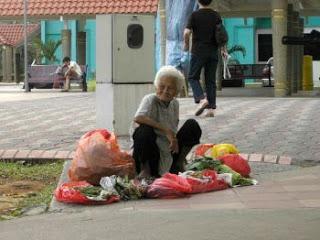Without an official poverty line, it’s difficult to say whether it exists or not, but forums and studies keep throwing thought-provoking analysis
IN September, the faculty of arts and social sciences at National University of Singapore (NUS) organised a forum, Building an inclusive society: understanding and empowering the poor in Singapore, which brought into limelight the question again, whether poverty exists here?
In the first session, Irene Ng, associate professor at NUS, presented her survey of 383 Singaporeans on their attitudes towards poverty. Then, Laurence Lien, nominated member of parliament, highlighted the need to generate awareness about poverty in Singapore. Finally, Hui Weng Tat of Lee Kuan Yew School of Public Policy discussed the conditions of “working poor” in Singapore.
During the second session, panellists from ministry of social and family development, academicians, and social sector discussed Singapore’s social security system, challenges faced by low-income families as well as experiences of running a homeless shelter.
One Singapore
Last year, One Singapore – an organisation working to raise public awareness on how to make poverty history, civil society activists, journalists and other voluntary organisations debated the same issue in a forum organised by the Singapore Management University’s Wee Kim Wee Centre. Participants alluded to the fact that based on the most recent 2007/2008 household expenditure survey, the average monthly income of the bottom 20% of households in Singapore is only S$1,274, which is far less than their average monthly expenditure of S$1,760.
Bottom fifth
Even though the city-state has no official poverty line, Jacqueline Loh of Lien Centre for Social Innovation, Singapore Management University, in her 2011 study, Bottom fifth in Singapore, wrote, “Singapore has always adopted a firmly anti-welfare approach in its social and economic policy, however its minimalist approach to addressing the long term needs of the poor runs the danger of perpetuating a substantial population of chronically poor.”
“It has been estimated that a family of four would need S$1,700 to cover basic costs of living, but S$2,500-3,000/month to meet a ‘social inclusion’ level of income. A household income level of S$1,500 is the threshold level specified by the Ministry of Community, Youth and Sports (MCYS) that determines household eligibility for many of the support programmes funded through the Community Care Endowment Fund (ComCare Fund).”
The MCYS has since revised the eligibility criterion from ComCare to a monthly household income of S$1,700 and below, or a per capita income of S$550.
Loh also cautioned against the increasing disparities in Singaporean society and stresses on the need for proactive intervention. “With minimally 12% of households living below an unofficial poverty line and at least 20% of households living below a social inclusion level of income, there is the risk that a chronically disadvantaged underclass is developing. In these high numbers, the prevalence of the poor is a systemic issue that needs a systemic solution,” she writes.
Ministry’s data
In a study of 2,000 respondents with gross monthly household income of S$3,000 or less, commissioned by the MCYS in 2011, only 57% reported that their income “was adequate for their needs”. Rest had faced financial issues and sought help either from government agencies or extended family. Some also reported “not knowing there is help available”.
High HDI – but no IHDI, MPI
According to this year’s UN Human Development Report, Singapore’s Human Development Index (HDI) value for 2012 is 0.895, which is in the very high human development category, positioning the country at 18 out of 187 countries and territories.
But, as acknowledged by the UN itself, “the HDI masks inequality in the distribution of human development across the population at the country level. Thus, the 2010 HDR introduced the Inequality Adjusted HDI (IHDI), which takes into account inequality in all three dimensions of the HDI by ‘discounting’ each dimension’s average value according to its level of inequality”. Similarly, a Multidimensional Poverty Index (MPI), was also introduced the same year, which identifies multiple deprivations in the same households in education, health and standard of living.
The report doesn’t mention the value of IHDI and MPI for Singapore “due to a lack of relevant data”.
Solutions
Laurence Lien, who is also the chief executive officer of National Volunteer & Philanthropy Centre in his remarks during the committee of supply debate early this year proposed, “According to my analysis of ministry of manpower’ statistics, real median wages of cleaners and labourers declined by 35% from 2000 to 2011; while those of service and sales workers declined by 15% in the same period. When some people are so poor that they and their children can’t have three decent meals a day, it’s a scandal because, at the same time, Singapore has one of the highest density of millionaires in the world – 188,000 millionaire households by one estimate.”
Stressing on the need for new paradigms to tackle poverty and improve inter-generational social mobility in Singapore, Lien listed four solutions. “We need much better data on the state of poverty, including how poor households cope or do not cope with limited resources, and how aid is perceived and used. We need to establish poverty thresholds for households with different circumstances in order to be more targeted in our interventions.”
Doing more to preserve the self-esteem, dignity and confidence of the poor; devising comprehensive plans to help them become self-reliant and break the cycle of poverty; and redesigning the interventions systems in a way that they are not patronising and demeaning to the poor, are some of the other solutions Lien proposed.


